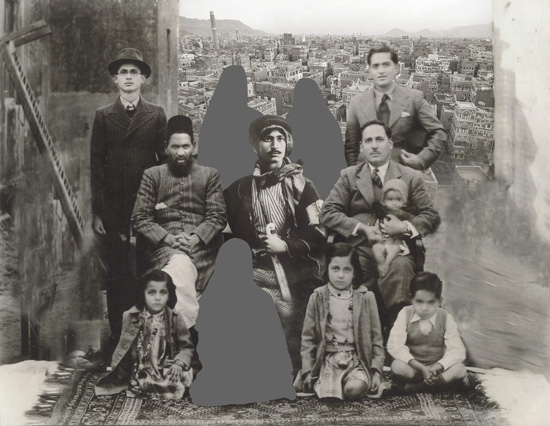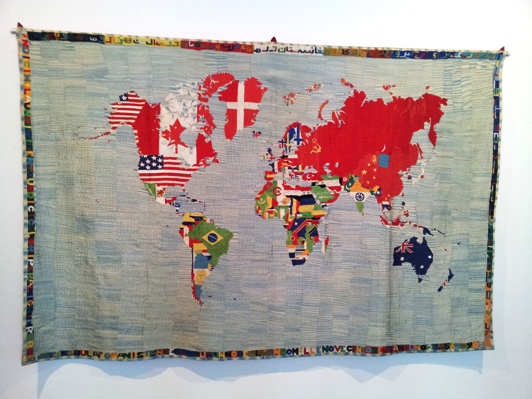Over the past years, most of my visits to contemporary art exhibitions have ended in disappointment. I consider myself an ex-curator: after my last show in 2015 I decided to step out of the art world. I usually tell people I enjoyed working with artists but increasingly disliked the art world, in both its commercial and institutional aspects. But this Biennale has left me inspired and hopeful for the art world – reviving my old hope that artists give creative expression to the deep undercurrents of collective development, giving an indication of where we are heading. This impression was left especially by “The Milk of Dreams” show curated by Cecilia Alemani, but surprisingly also by many of the national pavilions and some of the collateral events.
Continue readingTag Archives: contemporary art
Contemporary Art in the Gulf
Here is the full text of the book I published in 2013, called ‘Contemporary Art in the Gulf – an Introduction’.

And here is the Table of Contents:
7: Foreword
11: Contemporary Art in the Gulf
29: A Cultural History of the Arabian Peninsula
47: Saudi Arabia
69: Kuwait
87: Bahrain
99: The United Arab Emirates
119: Qatar
129: Oman
137: Where the Gulf is Heading
Article about Jonas Staal in Syria

Closing ceremony of the New World Summit in Derik, Syria
I published this article in the December 2015 edition of The Art Newspaper – with first a ‘news’ story on page 3, and then a feature on pages 58-59. Continue reading
Art and Soft Power in the Gulf
Article published in Issue #47 of Afkar / Ideas published in October 2015 by the European Institute of the Mediterranean in Barcelona / French version / Spanish version
Art and Soft Power in the Gulf
Recently, there has been much news and debate about how the Gulf States are acquiring the icons of global culture, such as famous paintings, works by star artists, and even whole museums. This is seen as the exercise of ‘soft power’, defined by Joseph Nye as ‘the ability to get what you want through attraction, rather than coercion or payments’. One may wonder then, which objectives direct the Gulf’s investments in art? And, are they being achieved? Continue reading
‘Searching for Ancient Arabia’ – further information about the research project
A workshop will be held for all those interested in participating in this research project at the Downtown Campus (off Hamdan Street) of NYU Abu Dhabi on Tuesday 25 February, from 18:00 to 20:30.
For details about the workshop and registration see the bottom of this page.
Introduction to the research subject

- Stone Altar from Marib (5th – 4th Century BC) and Bronze Statuette of the warrior Ma’dikarib, South Arabia (6th century BC). These and all other photos and maps/diagrams on this page are reproduced from the book “Arabia and the Arabs from the Bronze Age to the Coming of Islam’ by Robert Hoyland, 2001. See below for ordering information
“Only a small proportion of the lore of the Arabs has come down to you. Had it reached you in its entirety, much scientific and literary knowledge would have been yours”
Searching for Ancient Arabia
I’m about to start a FIND fellowship at New York University Abu Dhabi called ‘Searching for Ancient Arabia’ and I’m looking for artists, curators, critics and scholars to participate in this research project.
A Saudi Artist in Paris

Ibrahim Abumsmar is an artist specializing in minimalist sculpture with a sociopolitical message. He hails from the Asir, the mountainous southwestern region of Saudi Arabia. After participating in exhibitions in Saudi Arabia, Dubai, Qatar, Italy and Istanbul, Ibrahim is now completing a two-month residency at the Cité des Arts in Paris. Continue reading
An Encyclopedia of National Representation: Review of the Venice Biennale, 2013

Alfredo Jaar’s iconic installation of the Giardini rising from the bottom of a pool only to disappear again quickly under the waves. Photo & composition by RK
Although I came to Venice to test and explore an artist’s project that fundamentally critiques the system of national representation at the Biennale, I must admit I enjoyed the national pavilions much more than the group show “The Encyclopedic Palace” and some of the collateral events.
Artists and curators asked to represent their country invariably grapple with the question how to ‘represent the nation’ and why they should be the ones called to do it. This intellectual quandary produces some interesting artistic results. Besides, this system does allow for a plurality of approaches to be present in the same event, notably empowering voices from the periphery.
I had my hands full with checking the national pavilions around town and relating what I saw to Jonas Staal’s Ideological Guide to the Venice Biennale. This guide, an app for android and apple-ware, describes each pavilion in detail, providing statistical data for the country, its conflicts and alliances, with a cover piece by an art professional well acquainted with that country, usually a ‘national’ (sic).
It has a navigation system, and although I usually spurn such devices, preferring to rely on my sense of orientation, knowledge of the city map and passers-by, I did use this one. Venice is a labyrinth. The precise GPS pinpointing is more useful than the Biennale’s map. So I managed to see quite a lot in two days, while maintaining the time for long exchanges with the artists and an occasional curator.
What follows are reflections about the national pavilions, interspersed with comments about the Biennale in general and personal perspectives on artists and shows that were not part of the national representation mechanism.
I will be adding the chapters on the national representations as I finish writing them.
All the Middle Eastern national presentations
Gulf Art Guide online
Finally, after a year and a half working on project proposal and funding, followed by nearly a year intensive research and writing, the Gulf Art Guide is online. Some of the cities (Abu Dhabi, Sharjah, Muscat, Doha and Manama) are covered by my co-author Neil van der Linden. The rest is written by me, and I worked a lot on website layout, design, functionalities and editing and proofreading the whole site.
I first looked forward to the day the Gulf Art Guide would finally be finished and online, as a day of relief. But the same evening that it went online I realized that it is like a baby: now I will have to nurture it, help it get over infancy diseases, and help it grow up. No time to celebrate!
The essay, which you can download here, provides an unusual take on the Gulf art scene.
We have over 1000 likes on our Facebook page, which is a good way to keep abreast of what’s going on in the Gulf Art World.
A version 1.1 is being prepared for release in the summer of 2013.
Afghanistan in Documenta 13
Note: a very different, one-page graphic version of this article was published in the Belgian art magazine A Prior #23; see the article here. I published another article about this subject in the Indian art magazine Take On Art.
With fourteen Afghan artists and at least ten artists whose work reflects on this country, Documenta 13 is strongly flavored by Afghanistan. After Kassel, Kabul is the main location of Documenta (the others being Alexandria & Cairo, and Banff in Canada): 27 Documenta artists will show their work in the Queen’s Palace in Kabul’s Babur Gardens in an exhibition that opens on June 20. Continue reading



